-
Six diamond holes completed totalling approximately 1,295m of diamond core along the 1.6km long historical line of Quartz Ridge workings at Turon
-
Drilling focused on testing beneath high-grade rock chip sampling (up to 1,530 g/t gold), RC drilling results (up to 2m @ 6.53g/t Au from 30m) at the Sixty Seven mine, and several highly anomalous gold intercepts with results up to 10m @ 1.64g/t gold north of the Quartz Ridge mine
-
Drilling intersected multiple zones of significant quartz veining with associated mineralisation within all holes, including arsenopyrite, pyrite, with chalcopyrite and gold locally developed.
-
Best results include
2m @ 2.42g/t Au from 101.8m (QRD002)
1m @ 2.68g/t Au from 29.7m (QRD002)
1m @ 3.1g/t Au from 76m (QRD003) -
Vein widths intersected were to 20 m, but commonly around 3m. Veins vary between massive to strongly laminated typically associated with the reactivating shear zones and commonly characteristic of nuggety gold systems.
-
Broad arsenic haloes, up to 36m wide, envelop the mineralisation and quartz veining supporting the presence of deep mantle tapping structures.
-
The richest and largest historical gold producer in the camp, the Just in Time Reef, lies 200m east of the Quartz Ridge line and currently remains untested by drilling.
-
Periodically reactivated shear zones, the extensive quartz veins and overturned folded sequence provide a complex structural environment that requires further study.
-
A geological model for the nuggety system is being developed to define future exploration over the 1.6km target and possible extensions.
The 100%-owned Turon Project, won by direct licence application in late 2019, lies within the Lachlan Fold Belt’s Hill End Trough, a north-trending elongated pull-apart basin containing sedimentary and volcanic rocks of Silurian and Devonian age.
Six HQ3 diamond holes developed for 1294.5m along the 1.6km long line of the historical Quartz Ridge workings (Figure 1). The holes were distributed along the length of the camp, with one hole testing beneath highly anomalous gold intercepts, with results up to 10m @ 1.64g/t gold, returned in historical RAB drilling north of the Quartz Ridge mine[1]. A single hole was developed beneath the centrally located Sixty Seven Mine, which returned 2m @ 6.53g/t Au from 30m, and two holes were developed beneath a substantially-enriched chip sample reporting 1,530g/t Au located south of the historical Dead Horse Reef Mine. Only the Sixty Seven Mine working was directly tested through drilling.
[1] See 25 Nov – KTA expands its landholding in the Lachlan Fold Belt; 26 Jun – Gold intersected in Shallow Drilling at Quartz Ridge, Turon

Figure 1. Diamond drill hole location and results at Quartz Ridge

Table 1. Drilling summary
Quartz Ridge History and Exploration Background
The Quartz Ridge line of gold workings extends over a length of 1.6km from its namesake mine situated in the northern extremes to the Dead Horse Reef Mine in the south. The vein quartz is up to 10m wide and forms a north-south strike ridge generally conformable with the adjacent metasediments of the Cunningham Formation. The Cunningham Formation includes siltstones, slates, calcareous and lithic greywackes, and conglomerates.
Past explorers report numerous significant gold grades from chip and mullock sampling, including 1,530g/t, 150g/t, 26g/t, 14.6g/t, 12.55g/t and 11.3 g/t Au, distributed along the length of the gold workings. The outstanding chip result of 1,530g/t gold lies south of Dead Horse Reef. The Dead Horse Reef Mine contains an adit approximately 130m long, and historically reported grades up to 4oz/ton (~120ppm Au; NSW Government database). It was described as rich but patchy. A chip sample north of the Quartz Ridge Mine returned a peak value of 11.3g/t gold. Several shallow RAB holes returning assays exceeding 0.5g/t Au with a peak value of 1.64 g/t Au, sampled as 10m composites, surround the sample.
The Quartz Ridge prospect was quickly identified as representing a shallow exploitable opportunity for the Company where multiple walk-up drill targets with significant gold tenor remain poorly tested.
Results
Six HQ3 diamond holes developed for 1294.5m along the 1.6km long line of the historical Quartz Ridge workings. Three holes were designed to test the extensions north and south of the Quartz Ridge mine, including one hole beneath highly anomalous gold intercepts, with results up to 10m @ 1.64g/t gold, produced by historical RAB drilling to the north. A single hole was developed beneath the centrally located Sixty Seven Mine, where a drill intercept of 2m @ 6.53g/t Au was reported. Lastly, two holes were developed beneath a substantially-enriched chip sample reporting 1,530g/t Au located south of the historical Dead Horse Reef Mine. Only the Sixty Seven Mine working was directly tested through drilling.
The Company subsequently elected to develop a second hole (QRD006) beneath the maiden hole (QRD005) south of Dead Horse Reef, which returned encouraging visual zones of silica flooding, milled breccias and sulphides, such as arsenopyrite, pyrite, and chalcopyrite.
The oriented HQ3 holes were geologically and geotechnically logged. Intersected zones of vein quartz and sulphide mineralisation were selectively sampled and submitted to ALS in Brisbane for a limited assay suite, including gold, silver, arsenic, copper, lead, zinc and sulphur. Fire assay-AAS was chosen for gold, with the remainder read by ICP-AES after aqua regia digestion. Some results remain pending for Hole QRD004 and will be posted if significant intersection are encounted.

Figure 2. Schematic cross section 8,630mN (Hole QRD 002)
All holes intersected at least three significant zones or bands of commonly laminated vein quartz featuring coarse, euhedral arsenopyrite and pyrite encapsulated within an alteration halo defined by elevated arsenic, which ranges mostly between 100 and 6,040ppm (averaging 907 ppm As; Figure 2)[MM1] . Milled breccia’s and chalcopyrite are locally developed along with tourmaline and carbonate within specific holes (e.g. QRD005).
Gold mineralisation occurs in narrow, moderately west-dipping discordant quartz veins mostly confined to the alteration bands. The gold tenor is variable and consistent with the results returned in earlier exploration, with the better results (Table 2; Figure 3) conceivably associated with anticlinal axes and interpreted reverse faults, inferring a structurally complex setting.

Table 2. Results summary, gold results exceeding 0.1ppm all holes (results pending QRD004)
The recent and historical results at Quartz Ridge show gold in the quartz reefs as having a coarse nature, and a localised and erratic distribution. The Company considers a high geological nugget effect as characteristic of such narrow vein structures and argues that the higher-grade gold mineralisation occurs as either small plunging ore shoots or as saddle reef-style similar to that encountered at Brittania. Krakatoa contends that if it is the former, then the ore shoots plunge most likely northwards, and not southwards as suggested previously.
The Company has observed a regional NW-trending fabric apparent in the digital terrain model, which is potentially related to underlying weakness in basement rocks. The intersection between the N-S shear at Quartz Ridge with the NW fabric may impart a north-northwest plunge to the shoot geometry. A south-plunging geometry appears negated by the overlapping holes (QRD005 and 006) developed immediately south of the high-grade Dead Horse mine. Both holes intersected the Dead Horse reef reporting negligible gold.
The Company see similarities between the mineralisation style and geological setting at Turon with the sediment-hosted gold at Ballarat and Fosterville. At both, considerable quantities of coarse and very coarse gold, hosted by quartz veins, display high inherent variability, with grades ranging from 50 g/t Au or higher to a few g/t Au over minimal distances. Such deposits have historically proven challenging to drill, because of the small sample size (i.e. diamond core size) and the erratic gold distribution. The restricted access at Turon due to the ruggedness of the terrain and reconnaissance nature of the drilling further complicates matters.
Quartz Ridge continues to represent a shallow exploitable opportunity for the Company. The recent round of drilling has grown the Company’s understanding of the geology and potential controls on mineralisation. Multiple walk-up drill targets with significant gold tenor remain poorly tested, and Krakatoa looks forward to providing updates on progress as it happens.
The Company will:
-
review the results of the orientatied core drilling and advance its geological knowledge as well as look to increase the exploration through possible further drilling and mapping to test rock and drill results south of Dead Horse Reef Mine, north of the Quartz Ridge Mine and at many of the workings in-between.
-
Survey, sample and map accessible underground workings; and
-
Review the historically prolific Just in Time Reef, 200m east of the Quartz Ridge line, which remains untested by drilling.

Figure 3. Key gold intercepts at Quartz Ridge
Click onto full announcement below:
https://cdn-api.markitdigital.com/apiman-gateway/ASX/asx-research/1.0/file/2924-02312680-6A1008619?access_token=83ff96335c2d45a094df02a206a39ff4


